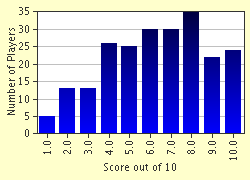Quiz Answer Key and Fun Facts
1. These artists who practiced the technique often called 'pointillism' insisted on which term?
2. The 'leader' of this group of painters was without a doubt:
3. The 'apologist' who put his brush down and jumped on his soapbox was:
4. In the book 'D'Eugene Delacroix au neo-impressionnisme', why did they claim a debt to Delacroix?
5. The primary reason the Neo-Impressionists applied their technique to Impressionist subject matter was:
6. Color theory was an important element in the Neo-Impressionists' system: Name the most influential scientist they revered for his work on color perception:
7. The most important painting in the Neo-Impressionist history, in terms of gaining the critic's attention and criticism was undoubtedly:
8. Not only was color theory in vogue, but lines, whether they descended or ascended to express moods. They even used a device like a protractor to measure them. Which painting exemplifies this?
9. What did critics reproach the most about Neo-Impressionist painting?
10. The Neo-Impressionists who continued after Seurat's untimely death in 1891, broke up their brushstrokes further, letting the eyes do the optical mixture. What did Paul Signac's brushstrokes resemble?
Source: Author
Bruyere
This quiz was reviewed by FunTrivia editor
ponycargirl before going online.
Any errors found in FunTrivia content are routinely corrected through our feedback system.

